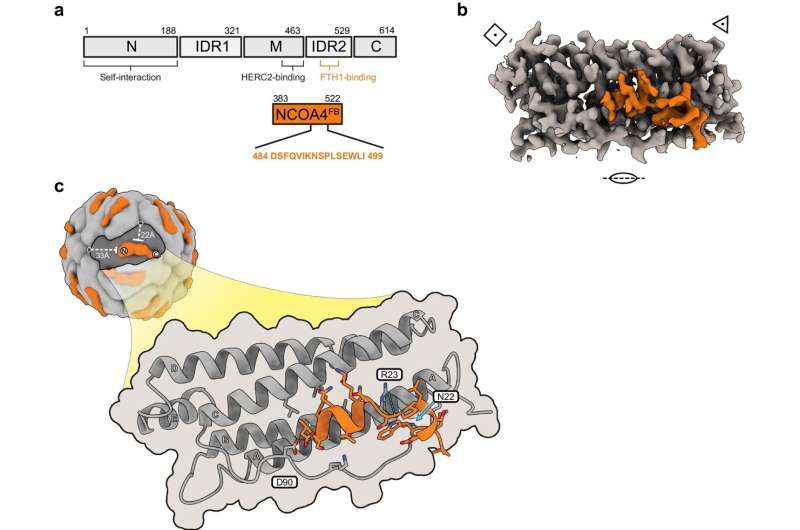This article has been reviewed according to Science X's editorial process and policies. Editors have highlighted the following attributes while ensuring the content's credibility:
fact-checked
peer-reviewed publication
trusted source
proofread
Scientist uses state-of-the-art microscopy to discover drug candidates for cancer

Microscopy has been making leaps and bounds in recent years. Science that was inconceivable a few years ago has become a matter of programming state-of-the-art microscopes to process reams of data. Dr. Gabriel Frank quickly realized the potential of cryo-electron microscopy to discover the molecular structures at levels heretofore unobservable.
When he joined Ben-Gurion University of the Negev, he pushed for the University to enter the field, culminating in the establishment of the Guzik Center for Advanced Microscopy and the purchase of a new, more advanced electron microscope. Using this microscope, Dr. Frank discovers promising drug candidates for cancer—the disease widely and rightfully referred to as "The emperor of all maladies," a phrase coined by Dr. Siddhartha Mukherjee.
Dr. Frank's latest research, published in Nature Communications, which is the first with BGU's more advanced cryo-electron microscope, explicates the interactions of ferritin with its regulator Nuclear Receptor Coactivator 4 (NCOA4).
In the cell, ferritin acts as a cage for iron ions. NCOA4 is used by the cell to decide when to release them from the cage and when to store them. Too much iron in the cell is toxic and leads to its death. Too little and the cell slows it down until all its processes are brought to a halt, including cell replication, which is crucial for cancer progression.
Using the cryo-electron microscope, Dr. Frank and his students were able to see for the first time the atomic details of the interaction between NCOA4 and ferritin. Understanding how NCOA4 binds ferritin could potentially pave the way for the synthesis of drugs that block this interaction, thus slowing down aggressive cancer cells, which strongly depend on large amounts of free iron.
In addition to his own research, Dr. Frank is passionate about the potential of cryo-electron microscopy and advancing it in Israel. To that end, he runs courses for students and faculty from other universities on BGU's microscope.
More information: Fabian Hoelzgen et al, Structural basis for the intracellular regulation of ferritin degradation, Nature Communications (2024). DOI: 10.1038/s41467-024-48151-1
Journal information: Nature Communications
Provided by Ben-Gurion University of the Negev




















